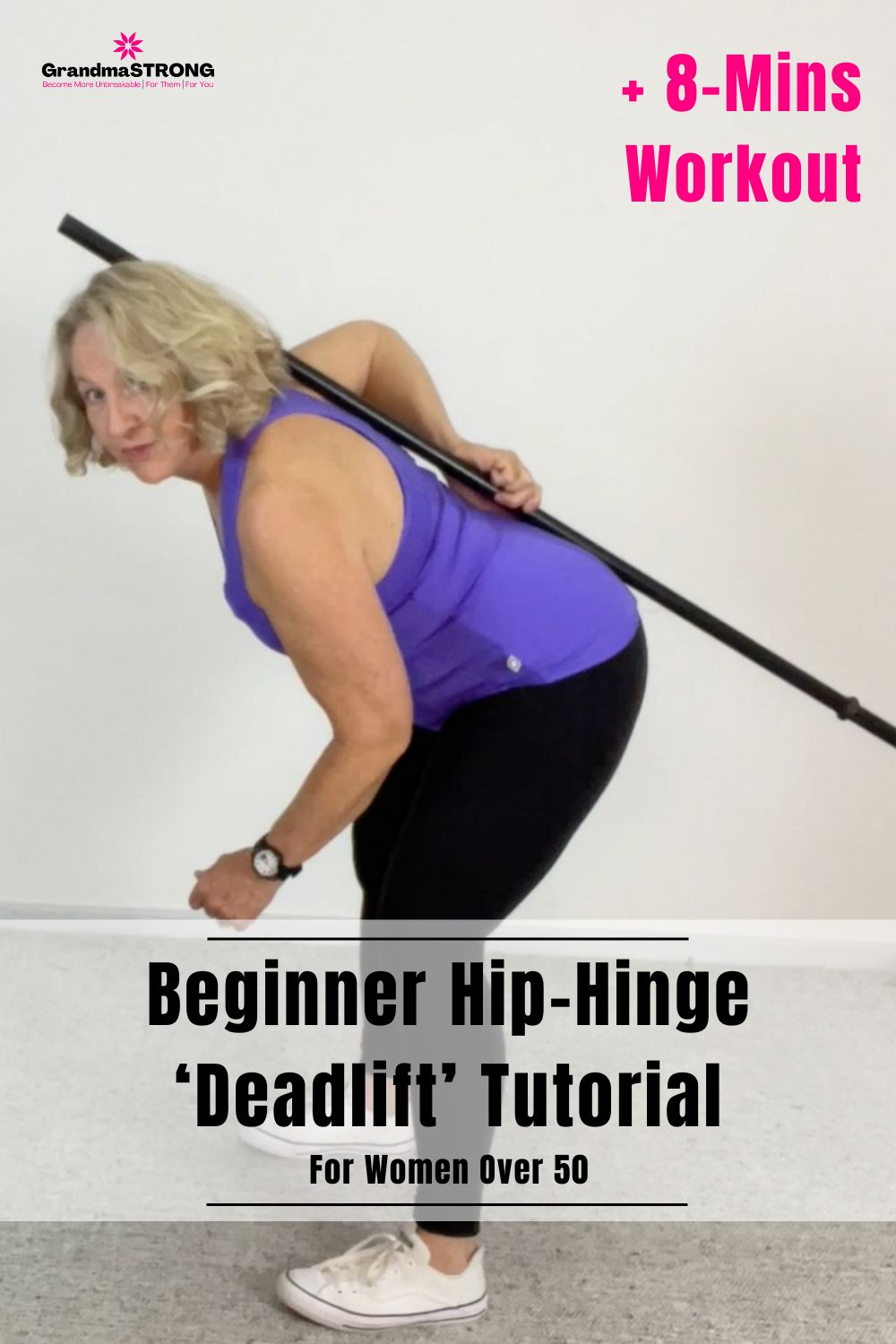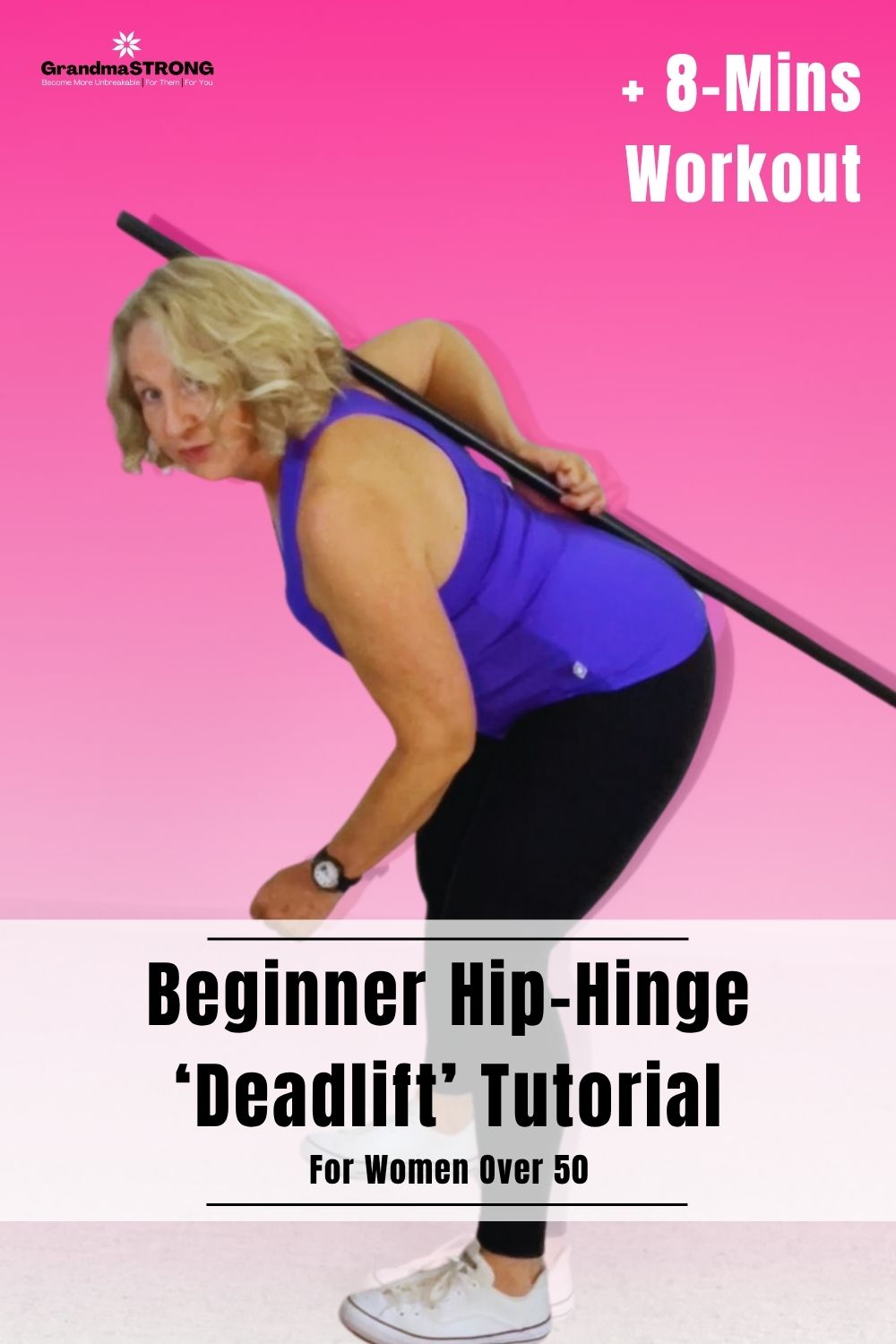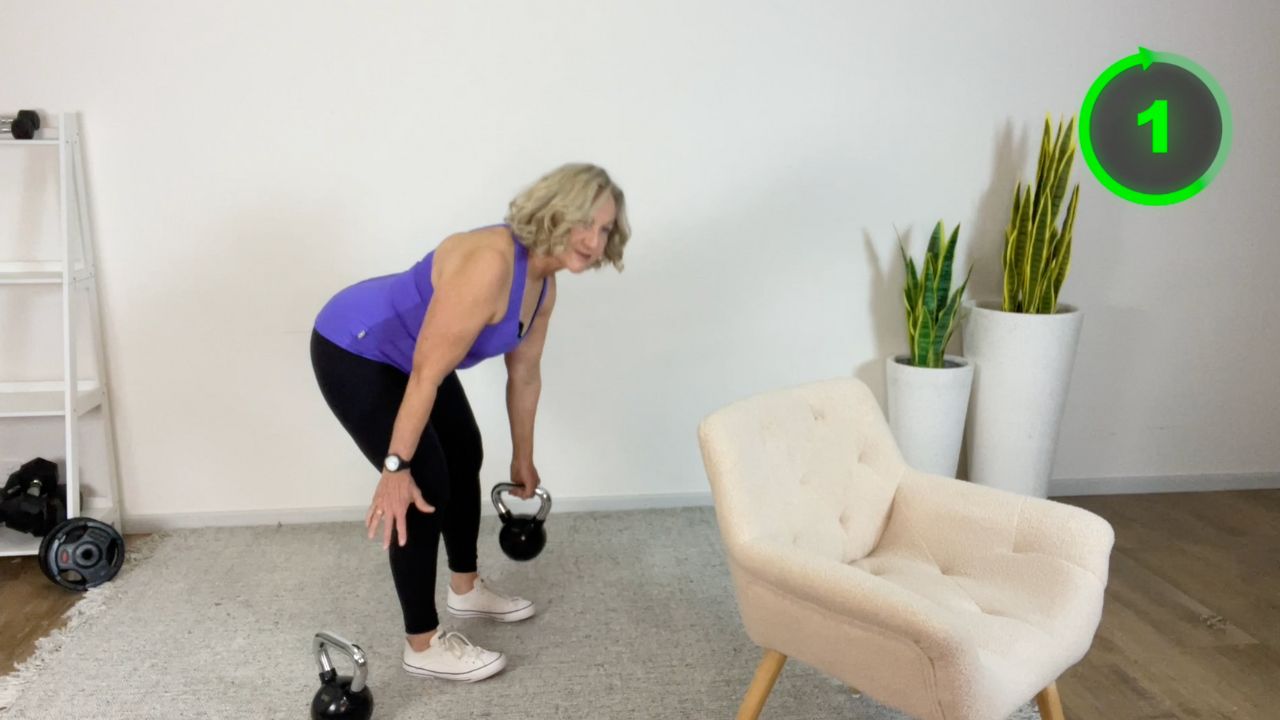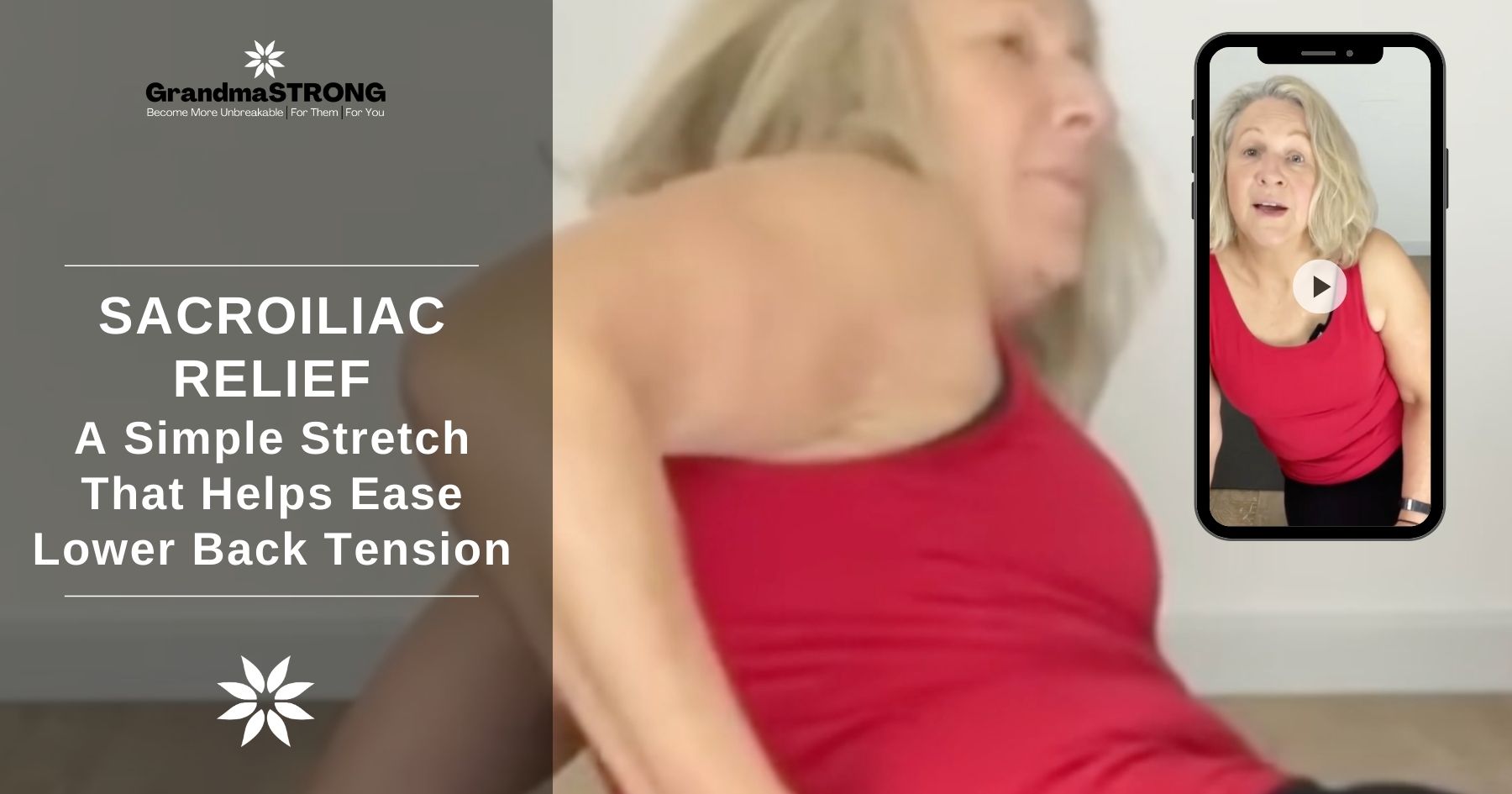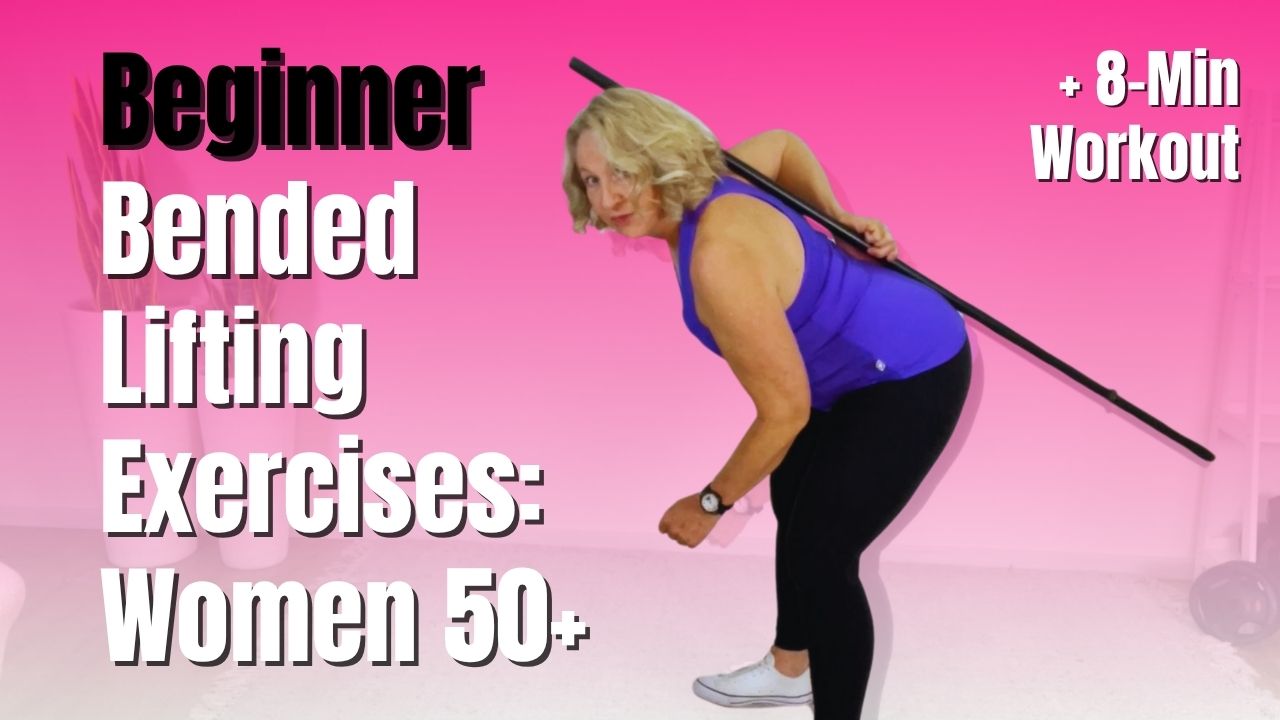
Hey ladies, in this bended lifting exercises for women 50+ post, I want to talk about one of the most powerful moves you'll ever master after 50, and that's the bent lift. It's also called the deadlift, and it's not just a gym exercise, it's how you safely pick up grandkids, groceries, or even your suitcase at the airport.
Now besides the squat, where we go to the toilet, this move is one that we do countless times a day.
Such as in the garden, you're doing it non-stop, you're pulling weeds out, you're bending over, you're pulling weeds, and then you're also lifting up big pot plants and moving them around your garden.
So this works the hamstrings, glutes, and lower back, and we need to get that technique just right before we load it.
Let's have a look
Watch: Women Lifting After 50: Beginner Hip-Hinge Tutorial That Protects Your Back (18mins)
Press play or keep reading, either way, you’ll master this essential ADL move in under 20 minutes.
Ready, let's jump deeper into the 'Beginner Bended Lifting Exercises for women Over 50' lesson:
So, in this post along with the why, you'll learn some bended lifting 'Deadlift' exercises you can do at home, and then we'll wrap up with a simple eight-minute at-home workout that keeps you lifting well and pain-free.
WHY Bended Lifting 'Deadlift' Matters + Real-Life Implications:
Now, whether it's playing on the floor with the grandkids, gardening pain-free, or ensuring you can get help if you have a fall, crawling is a very powerful tool in your strength toolbox. Let's have a look at the different different real-life crawling scenarios, along with how you can strengthen you crawling ability .
1. Protects your back & joints:
Physio-Therapist Dr Nicholas Tanner points out that learning to hinge from the hips instead of rounding the spine spreads the weight across the strong glutes and hamstrings, protecting the knees and lumbar discs, which is critically important as you get older and your joints start to wear out.
Why's That Important: So like Coach Sheree in the video, you can continue picking up a 5-15kg grandchild from the ground, and enjoying those magical moments, because the hip-hinge movement 'deadlift,' teaches spine-safe leverage so you can cuddle without straining your back.
2. Combats Sarcopenia:
In a 2023 Exercise Training & Postmenopausal women study identified that different types of deadlifts can work up to 70% of your total muscle mass and are one of the fastest ways to rebuild the lean tissue that naturally loses its strength after menopause, or that silent muscle decline called sarcopenia.
Why's That Important: Simply, muscle decline will eventually rob much of your independence and quality of life. So you can keep doing the everyday 'bended lifting' things that matter in life, like picking up grocery bags, fire wood stacking (like Coach Sheree in this video), moving gardening pots, picking up grandkids, and so much more, strengthening your body is the primary solution to negating sarcopenia.
3. Build bones, not just muscle:
In a 2018 Oxford study over women 50+ they identified that when you load your hips and spine vertically, you put a lot of stress on them, which builds new bone at the femoral neck and lumbar vertebrae, which are the places where osteopenia and osteoporosis are most likely to happen.
Why's That Important: Well, if you're like Janine in this video, it means you're more 'Unbreakable,' and can continue to operate effectively in the family business (or any business for that matter), lifting heavy loads and then delivering them. That means you're a valued asset, and can keep working for longer, or when you've decided, it's time... not your body.
4. Improves balance & fall resilience:
Strong hip extensors help you keep your balance and have been linked to a 57% drop in falls among women aged 75 to 85.
Why's That Important: Well, like Coach Sheree on a hiking trip over rocks explains, or as a study by the AAFP Foundation on 65+ age group identified, lower-limb weakness increases the likelihood of a first fall by 76% and triples the chance of repeated falls. Studies reveal that 40-60% of fall survivors restore their pre-fracture walking capacity. In summary, inadequate posterior-chain strength increases the risk of falling and can determine whether a grandma spends her latter years at home or loses her mobility and independence after one fall.
5. A longevity marker:
Not having good lower body strength, which includes hip-hinge power, is a predictor of premature mortality, so maintaining it is literally life-prolonging.
Why's That Important: Well, listen to what a bunch of 80 yr olds have to say about staying strong in the video, because women in their 60s and 70s who don't have strong pelvic chains not only have trouble, they also die younger. A Lancet study shows that a 5-kg drop in grip strength, which we use every time we bend and grab something, raises all-cause mortality by about 17%. This means that low "hip-hinge power (to grip and lift)" is a better indicator of death in later life than high blood pressure or cholesterol.
#1: Deadlift for Restricted Movement
Now before we even start the deadlift under load, let's see how you go if we lean forward, slight bend in those knees, hips are back, how do you feel there?
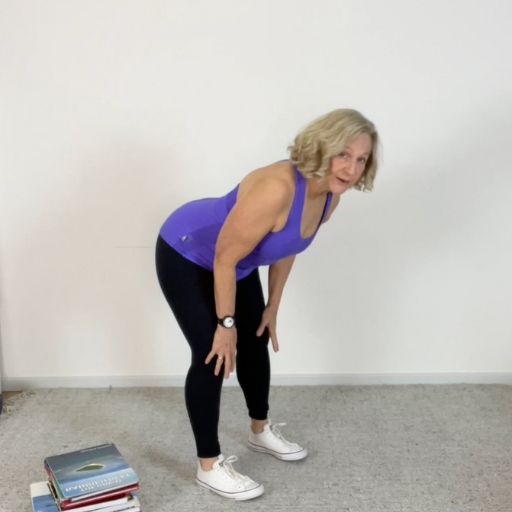
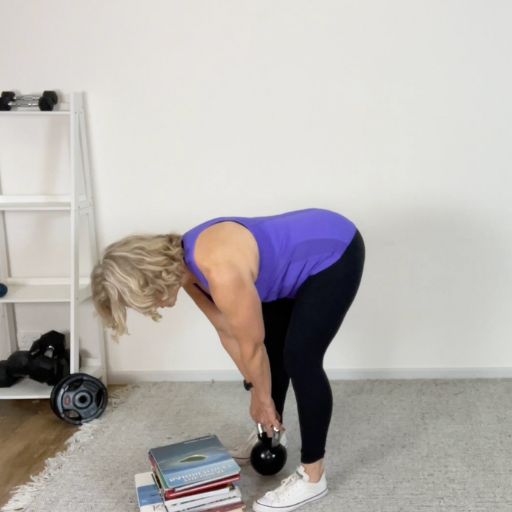
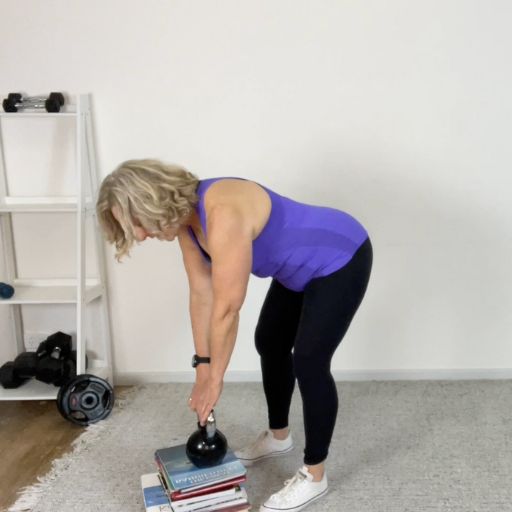
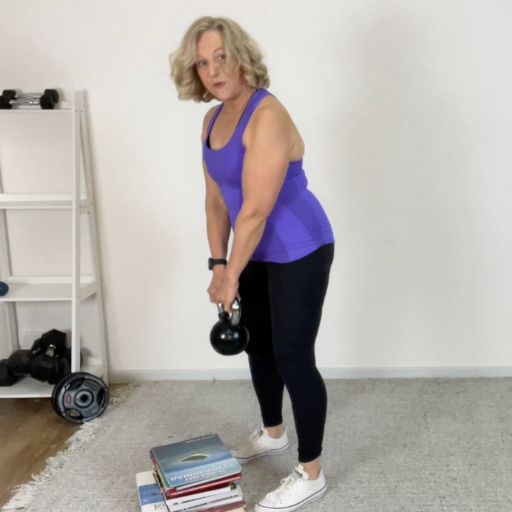
- Do you have any pulling, grabbing, aching when you bend forward?
- Do you do it okay without restriction? If so, you're probably great to go ahead and start the deadlift moves
Now if you've found that you do have restrictions there, you may need to start with the weight elevated.
- So I'm doing my deadlift with a kettlebell, not a barbell, and because of movement restriction you may need to start yours with the weight higher up, so on a load table or a pile of books
- So let's have a look at how we do this deadlift.
#2: Key Deadlift Form & Technique
Now before you start that deadlift under load, it's great to have a rod, you can have a broomstick, a mop stick, and this should touch my head, my shoulders, and my hips.
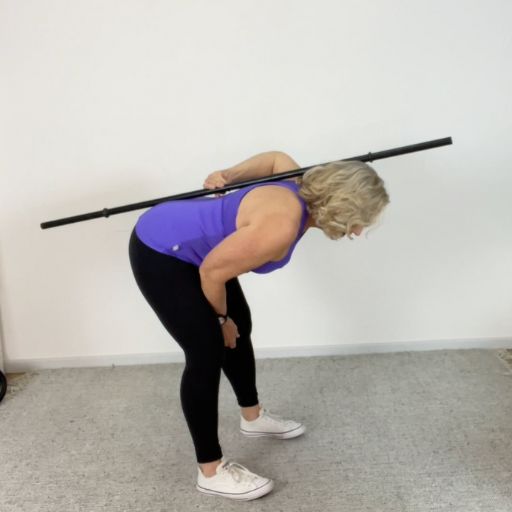
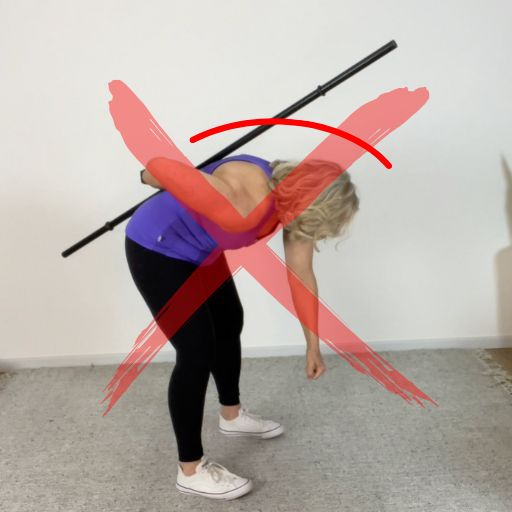
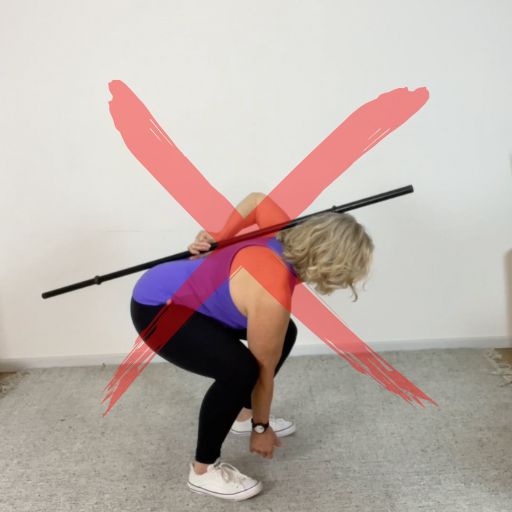
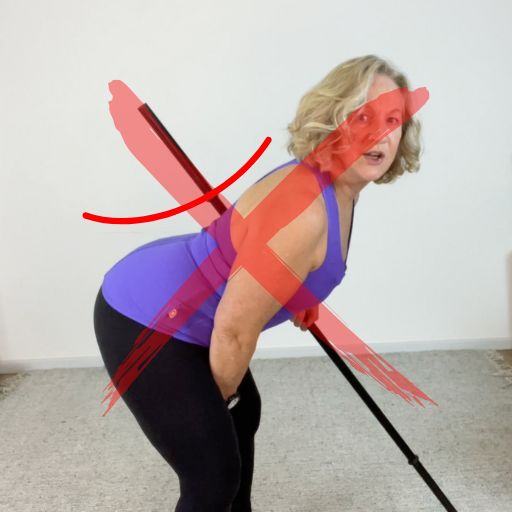
- Now as I come forward into my deadlift and I lean forward, I should find that that stick stays there
- Now if I let my weight that is in my hand pull me forward, I'm going to be feeling this in my lower back. So if you let that weight round your forward, then you're going to be feeling some pain discomfort in your lower back that's not ideal
- So we want to be able to come down and up the same way
- So as we come down, these hips come back, we're not trying to take this into a squat, so we're not trying to come low there, we just got a slight bend in those knees and we're doing a lean forward.
- Now if you've got quite a bit of curvature in your lower back like me, I have got to be very careful when I get down here that I don't poke this bum back even more. So if you can have a look at that, I don't want to take that bum, those hips back even further and make this curvature even more. So I just need to straighten out that curvature a bit so that I'm not placing stress on my back. So making sure that if you do, when you come down here, you're not trying to poke back, tilt those hips further than what they need to
So we're going to look at some ways, the correct way now of being able to take that weight down and bring it back up. And today I'll be using some kettlebells instead of a barbell.
#3: Standard Deadlift with Kettlebell
So doing my deadlift today, I'm going to be using a kettlebell. I've already determined that yes, I can hinge without any restrictions. So that's fine. So as we'll talk about breath in a moment, I want to show you the form first.
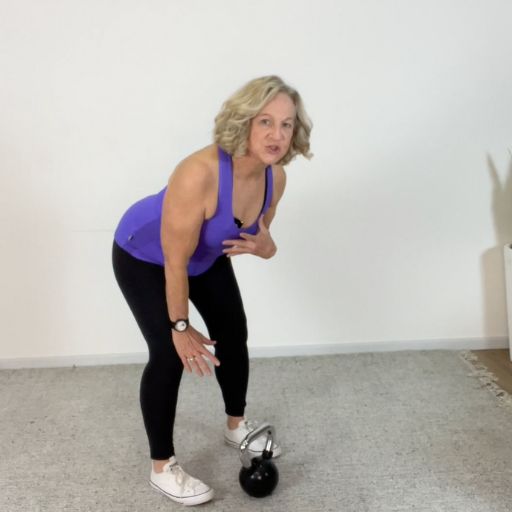
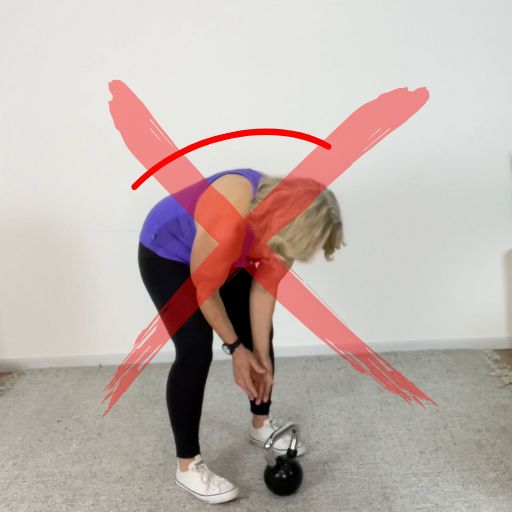
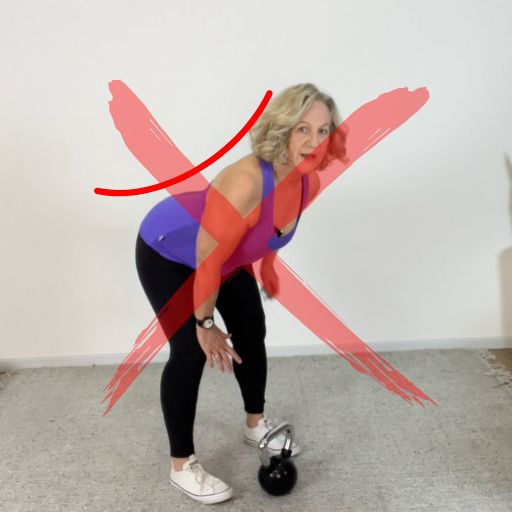
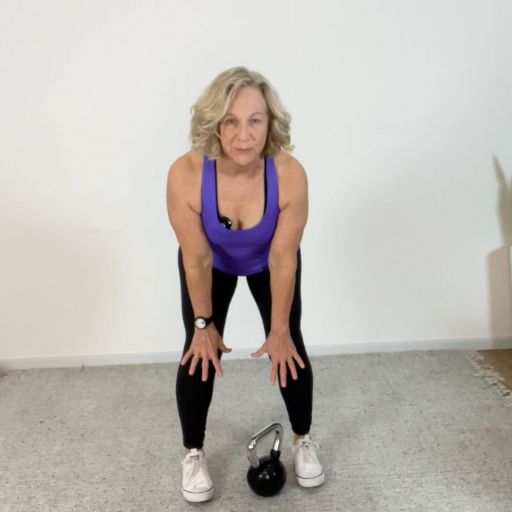
- So I'm going to come forward, taking my hips back and leaning forward from my hips. So this is a real lean forward with my chest still staying up
- So I'm not letting my chest drop
- I'm also trying to make sure I don't arch my back too far back.
- So I'm maintaining just a little tuck in under those hips and my arms are staying close to me. So think about a little plum under each armpit
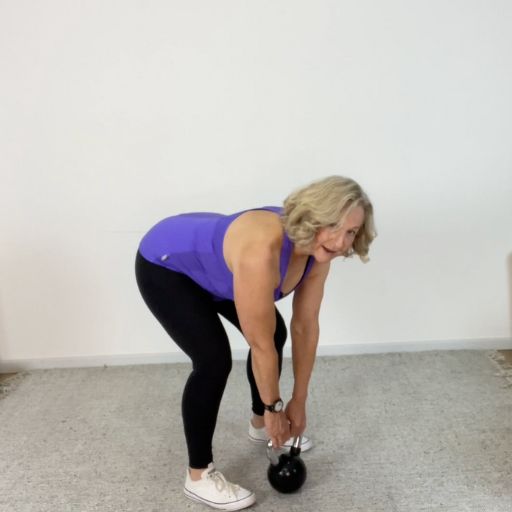
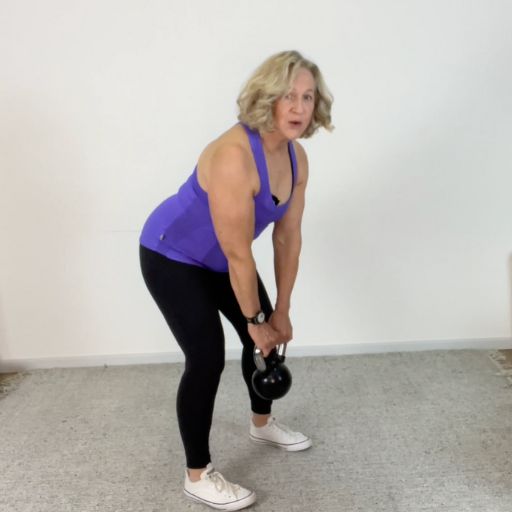
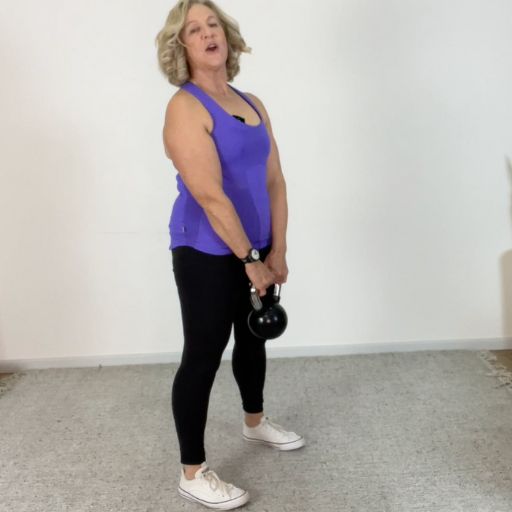
- So as I come down from my weight, I've got my arms close to me. My shoulder blades are back together
- And as I pick that weight up, my arms will stay close to me
- My glute cheeks will squeeze as I stand up and I'm just going to stand up nice and tall
Now, as we pick up our weight and coming up, it's like we're going to push the ground away from our feet.
So it's like we're trying to push the earth away from our feet rather than doing the pull from the arms. So the arms are not trying to do the pull because then we can overuse the back and underuse the legs and glutes that we're trying to use. So as I pick up this weight, I'm going to bring it up.
My armpits are staying close and I squeeze my glutes when I get to the top.
Now let's have a look at the way we breathe.
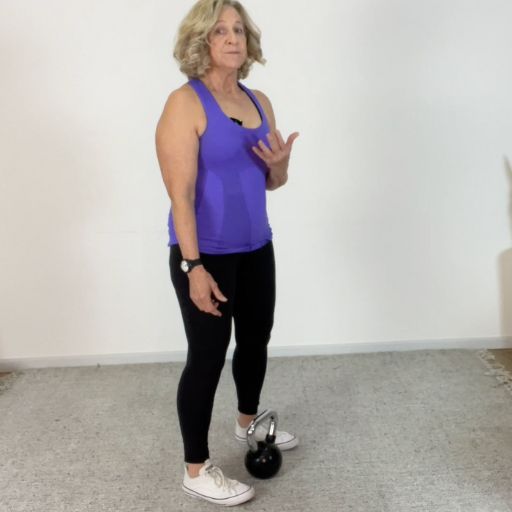
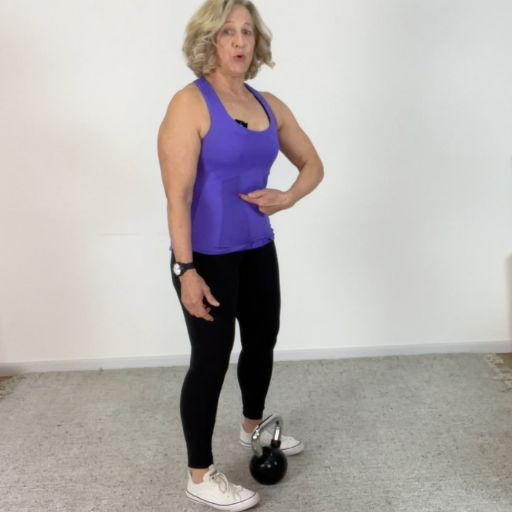
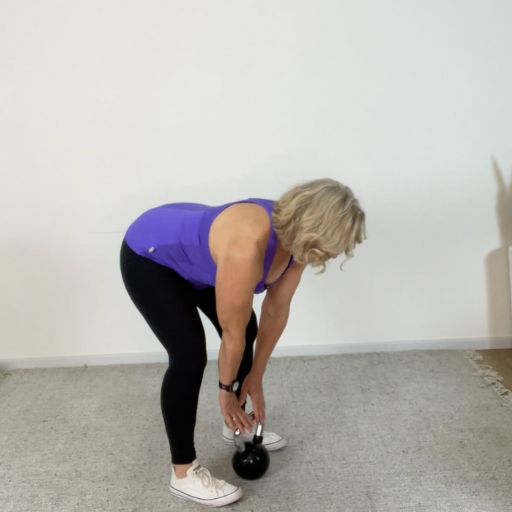

- So before I even pick up my weight, I'm going to take a nice big breath in
- As I hold it in for a moment, I'm going to pull my core on
- And as I come down a little, breathing out through pursed lips, just to hold, maintain the integrity of my core. And as I come down here, my hips are out
- I can feel my hamstrings working. And from here, I'm going to grab, I'm going to take a breath in and pull my core in
- And as I come up, I'm pushing the ground away from me and standing all the way up with a nice squeeze
- Breathe in again, core on, and coming up again, squeezing as I come up. So it really is just that hinge forward from the hips and then we're coming up again
- So that is our standard deadlift
Let's have a look at a sumo deadlift.
#4: Sumo Deadlift
Now a sumo deadlift is great when you've got instability of your knees. I had a very sore knee when I was practicing at a course that I was doing and I needed to do some deadlifts and my knee just could not do the conventional deadlift. So I went wider with my legs and it was a heap better, so much better because I was able to use these adductors at the same time. So it made my deadlift a lot easier.
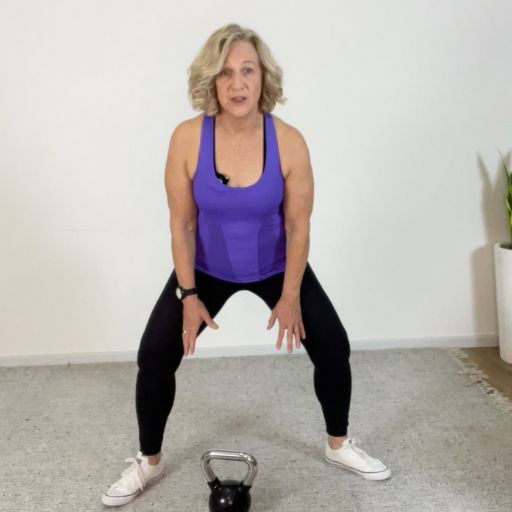
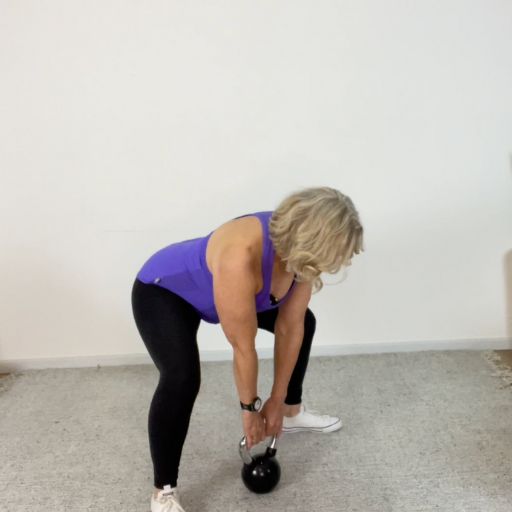
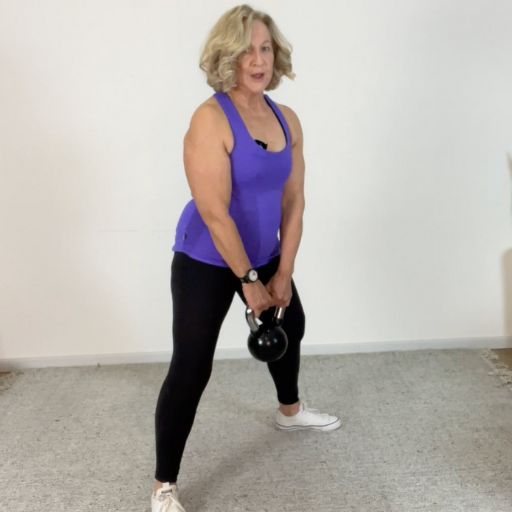
- It will be the same thing again. We'll have this between our feet. We will come down like we did before
- Our knees are slightly turned out
- We'll grab our weight and then we'll press and squeeze as we come up
- Coming in, taking it down again, little breath in and then pulling that core on and down and then coming up again.
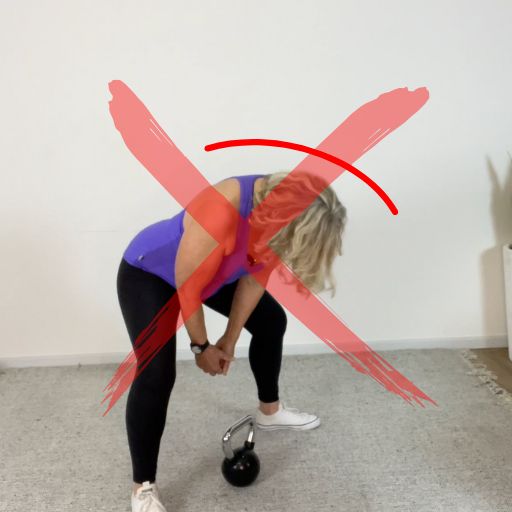
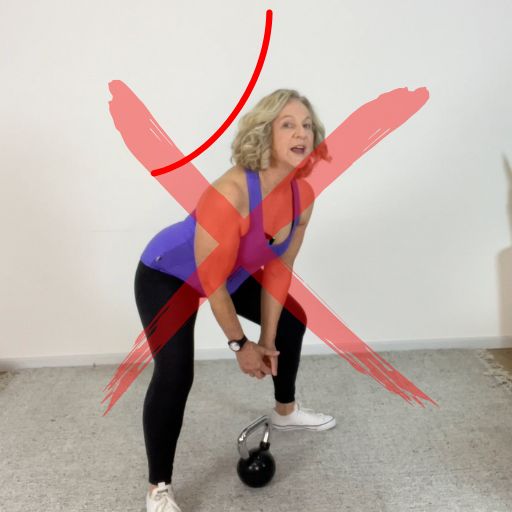
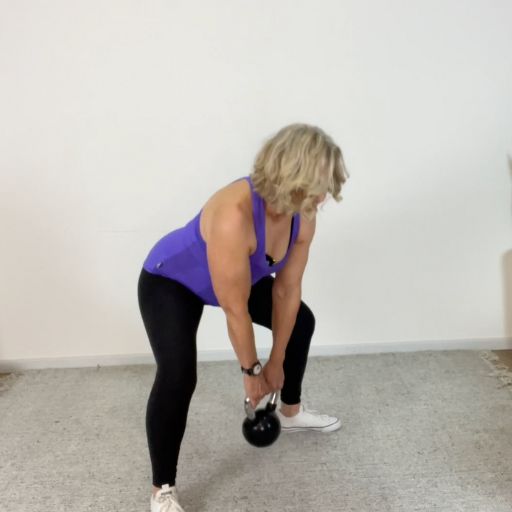
- You may wonder where to put that head. That head generally stays in line with the body
- You're not trying to have the head up here.
- You're not trying to have the head down there
- But in line with the body. So the eyes looking slightly ahead, but still doing the squeeze of those glutes as we come up. Let's look at some other variations.
#5: Single Leg Deadlift
And then we can have one leg and one leg.
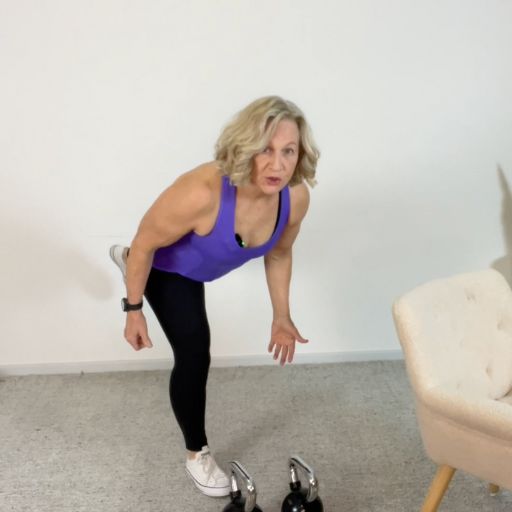
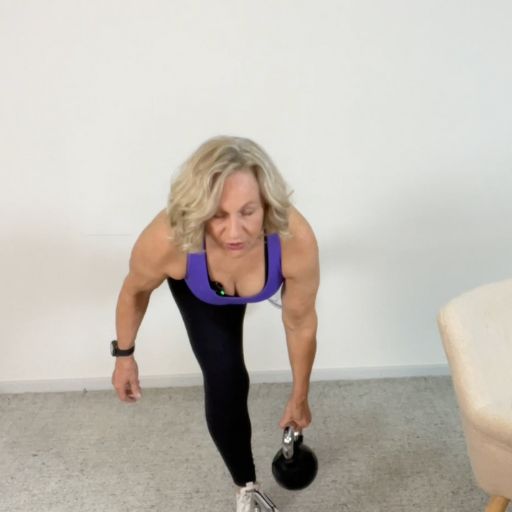
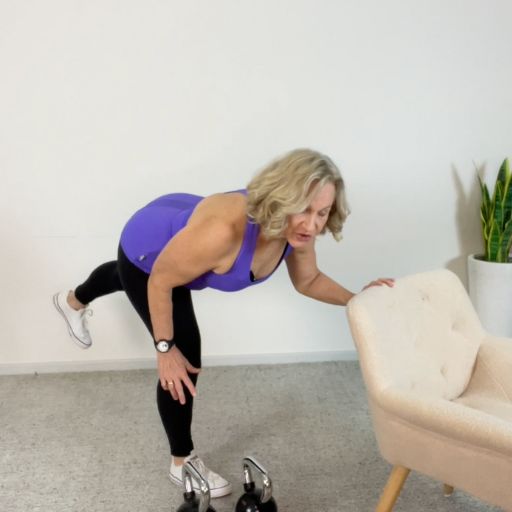
- So just staying on one leg, same thing, just trying to reach those hips back and then coming up.
- And then if we've got a weight, I normally would hold that weight in the leg that goes back. Great. So just again, trying to take it right back
- And if you prefer to, you can have a hand on a chair or the wall so that you can stay more stable, but much the same thing. It's just that that leg comes back behind you. So we're in a one legged squat instead.
#6: Standard Single Arm Deadlift
Now this is just a one arm one.
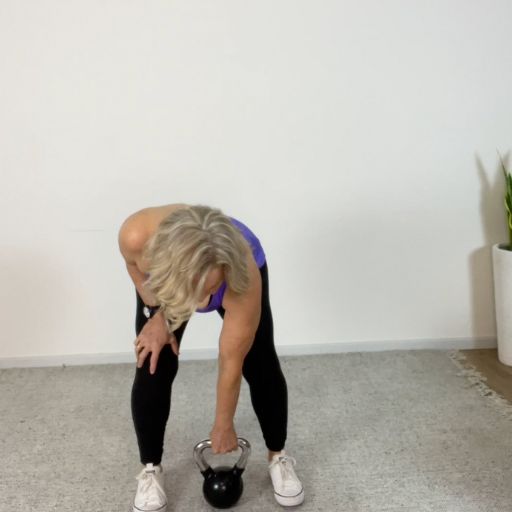
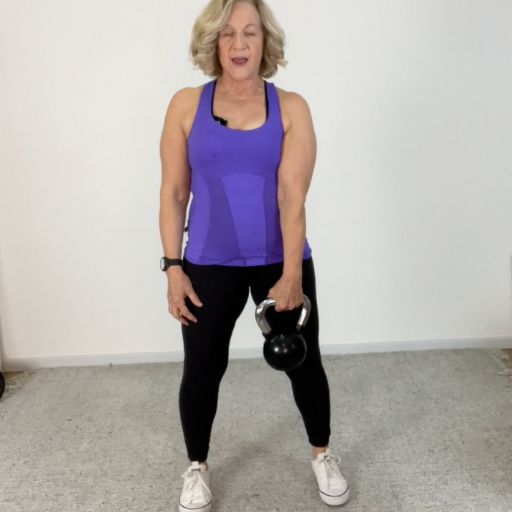
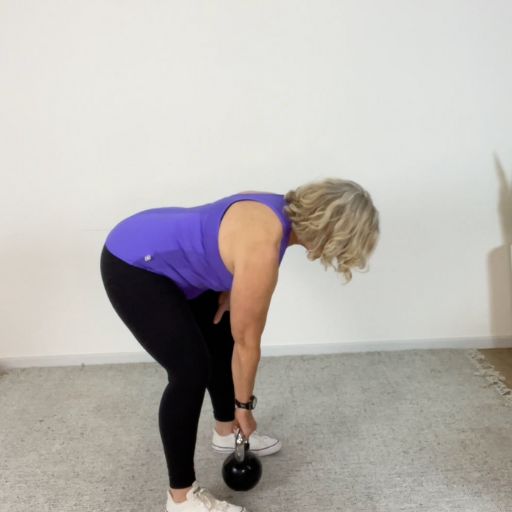
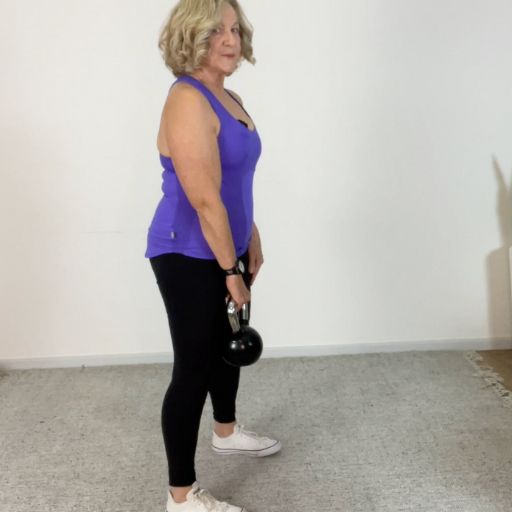
- Again, we're going to start with this in between. So a one arm one will be just one arm
- We bring up, we come forward
- And again, we're going to take it over to the other side and the same thing again
- If you see me from the side, it's exactly the same as it is with two arms, but I'm doing one arm.
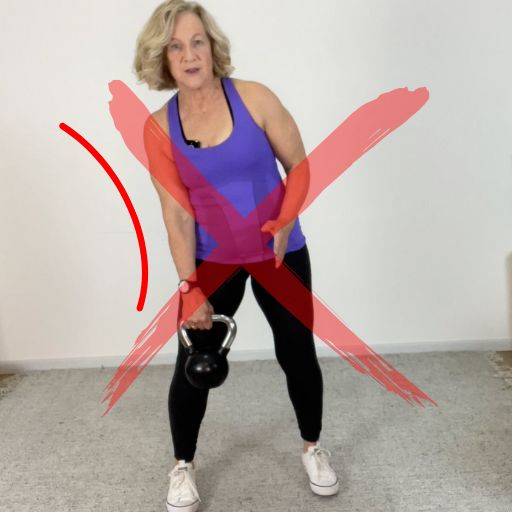
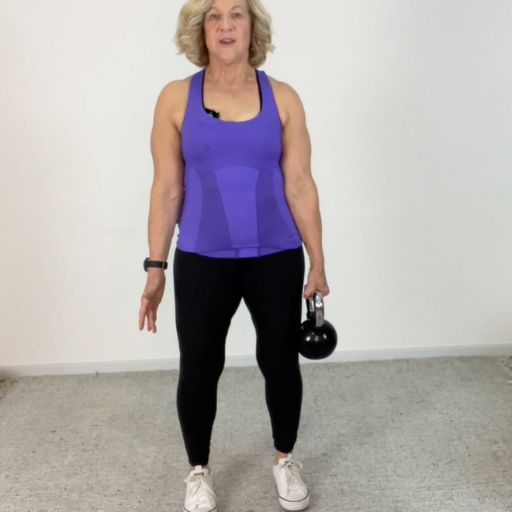
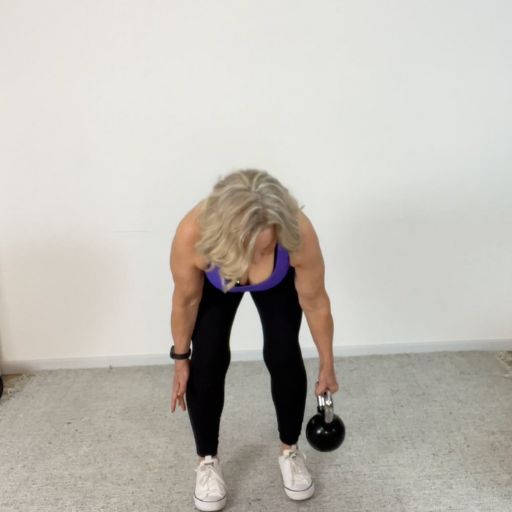
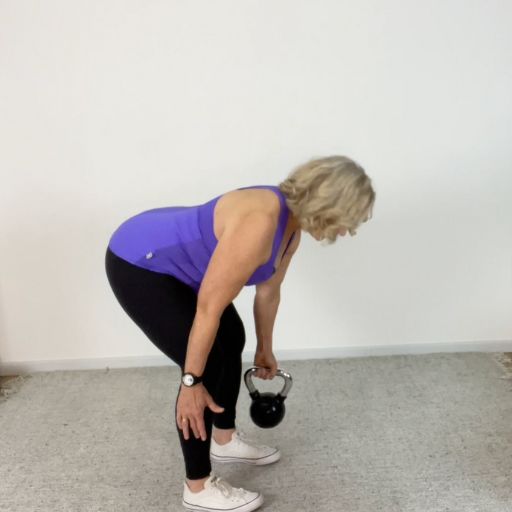
- And with one arm, we're going to try and stay straight. We're not moving side to side with that coming down and coming up
- Now from here, we can actually take this by our side. This is a suitcase hold, and this is a one armed one
- So from here, we're going to be doing the same thing
- Try not to let this take a side to side, but we're just coming straight up.
We're doing that hinge forward and coming up. This makes our core work even harder because we have to manage just taking one side. Now this is a great one.
If you go to the airport a lot and you know how many times you go to airport, maybe overseas, and they don't, you have to walk out and go up some stairs. I've had to do that a few times when I've arrived in Melbourne airport. And so you want to be able to lift up your bag fine and do it with good form.
So from here and coming up, squeezing those glute cheeks as we come up.
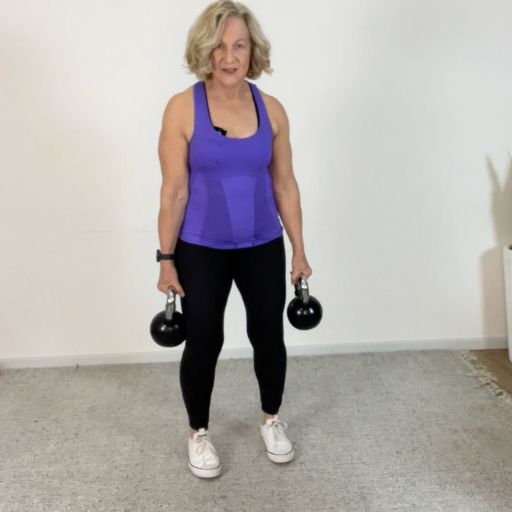
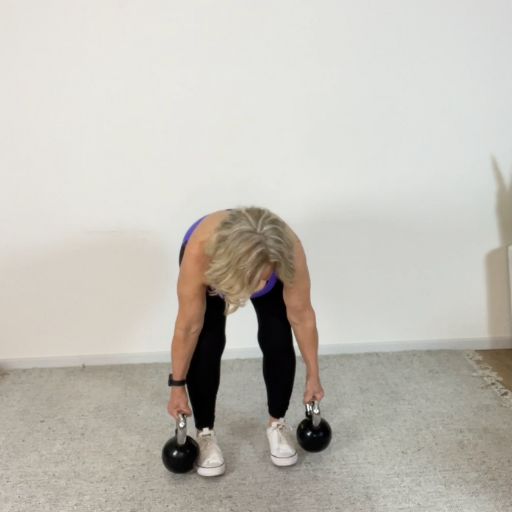
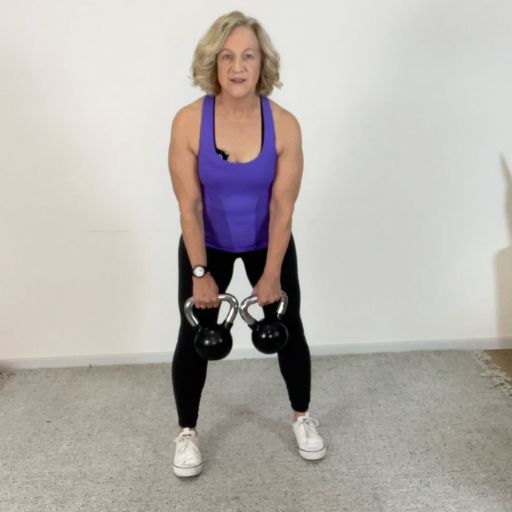
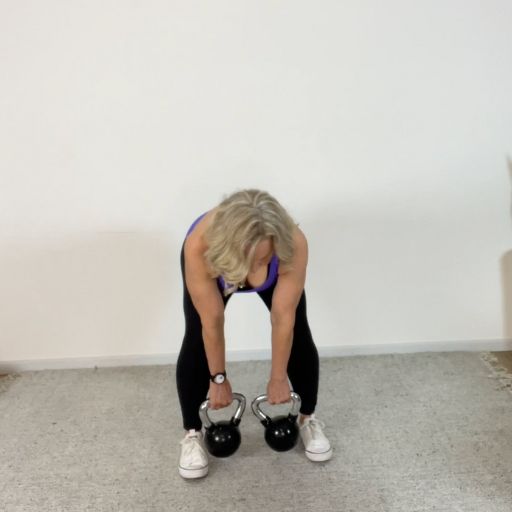
- Now, if we want to have another way of doing that, we can take two weights and it can be the same thing. So we're bringing this down either side and bring it up.
- And so these stem from the outside of our feet
- But we can also be taking these from the inside of our feet as well.
So if you're at home, you're doing your workout at home, you may opt to have, and you've got a bigger weight and a smaller mate. You may have a bigger one in one arm, smaller one the other, and you will just rotate them around.
So you actually can use both. It's going to make that deadlift a lot harder because you've got more weight. So just thinking about keeping those arms nice and close to you and pulling, pulling up and each time squeezing those glutes.
Well done. And now we're going to go ahead and do a workout incorporating all those different types of deadlifts and incorporating a few other moves into it just so we don't do deadlifts the whole time.
Workout: 8-Minute Repeatable Routine
Enjoy this Bended Lift 'Deadlift' strengthening workout, that Coach Sheree has put together, to compliment this Beginner Bended Lifting Exercises for women Over 50, post.
For a WARM-UP do some on the spot marching, with arms moving/swinging for 2-3 minutes before you start the workout. The warn-up intent is to simply get the blood flowing across your body and muscles.
This deadlift strengthening workout has been designed for those who struggle with everyday hip-hinging movements, and know they need to gain the strength and mobility to the gain freedom, independence and safety they desire.
Workout timestamps:
Timer 30 seconds workout, and 10 seconds rest between.
10:24 - Single Arm Deadlift
- Description: Hinge, pick kettlebell with right hand centred between feet, keep spine neutral on each rep.
- Real-Life Gain: Safely lift a shopping bag or bucket with one hand without twisting, even out strength for lifting grandkids from either side.
- Body Strength Gain: Glutes & hamstrings on one side plus anti-tilt core work.
11:44 - Hand Pass Through
- Description: Deadlift, pass bell hand-to-hand between legs each rep.
- Real-Life Gain: Trains coordination for passing objects (e.g. shifting a heavy pot).
- Body Strength Gain: Posterior chain + grip endurance & mid-line stability.
12:24 - Supported Single Leg Deadlift
- Description: Hold chair, hinge on right leg while free leg reaches back.
- Real-Life Gain: Balance to bend over garden beds or tie shoes standing, and balance when stepping off curbs or buses.
- Body Strength Gain: Hip stabilisers, ankle balance, glute-ham tie-in.
13:44 - Kettlebell hip-to-hip Core Rotation
- Description: Stand tall, pass bell side-to-side around the body at hip height during small hinges.
- Real-Life Gain: Preps torso for rotating with groceries or laundry baskets.
- Body Strength Gain: Obliques + deep core bracing while hinging.
14:24 - Suitcase Deadlift
- Description: Bell by right foot, hinge & stand without sideways lean.
- Real-Life Gain: Mimics lifting a carry-on off baggage carousel, and heavy groceries in each hand.
- Body Strength Gain: Unilateral grip, obliques, glutes on working side.
15:44 - Alternating Reverse Lunges with Bell
- Description: Hold bell chest-high, step one leg back, drop into lunge, alternate.
- Real-Life Gain: Strength for stairs or lowering to the floor then up.
- Body Strength Gain: Quad-glute synergy, hip mobility, cardio bump.
16:24 - Double Suitcase Deadlift
- Description: Two bells outside feet, stand keeping arms like suitcases.
- Real-Life Gain: Lift twin pot plants or two heavy shopping bags.
- Body Strength Gain: Doubles total load; boosts full posterior-chain strength.
17:04 - Kettlebell Swing
- Description: Hip-hinge snap, swing bell to chest height, arms passive.
- Real-Life Gain: Power for quick lifts (closing car boot, catching falling object).
- Body Strength Gain: Explosive glutes/hamstrings, heart-rate spike.
17:44 - Sumo Deadlift
- Description: Wide stance, toes out, hinge down, grip bell(s) then stand.
- Real-Life Gain: Safer lift option if knees ache, useful for lifting pet food bags.
- Body Strength Gain: Adductors plus glute-ham strength with knee-friendly angle.
Final Thoughts
Oh, well done. And that is the end of our workout. I hope you enjoyed that.
And I hope you've learned a little bit today about the hinge position or deadlift position. I hope you enjoyed it. I'll see you next time.
Additional DEADLIFTING Related Post/Video Resources: CLICK Image/Link:
Sources & Additional Reading:
- 1Hip Hinging: How it Can Improve Your Functional Fitness: By Dr Nicholas Tanner
https://www.forward-physio.com/post/hip-hinging-your-key-to-functional-fitness - 2Exercise training and bone mineral density in postmenopausal women: an updated systematic review and meta-analysis of intervention studies with emphasis on potential moderators
https://link.springer.com/article/10.1007/s00198-023-06682-1 - 3High‐Intensity Resistance and Impact Training Improves Bone Mineral Density and Physical Function in Postmenopausal Women With Osteopenia and Osteoporosis: The LIFTMOR Randomized Controlled Trial
https://academic.oup.com/jbmr/article-abstract/33/2/211/7605709 - 4Muscle Weakness as a Risk Factor for Falls in the Elderly
https://www.aafp.org/pubs/afp/issues/2005/0501/p1791.html - 5Grip strength and mortality: a biomarker of ageing?
https://www.thelancet.com/journals/lancet/article/PIIS0140-6736(14)62349-7/abstract
